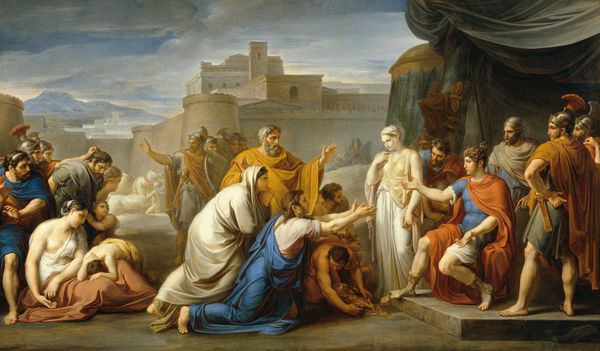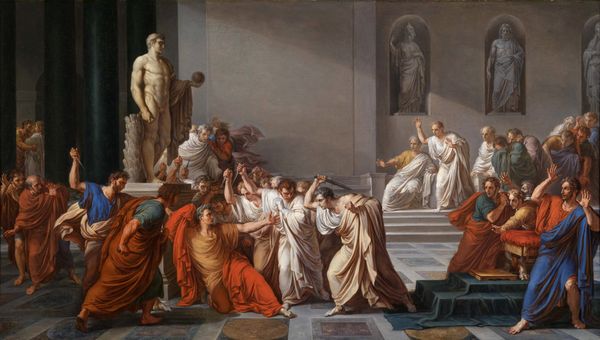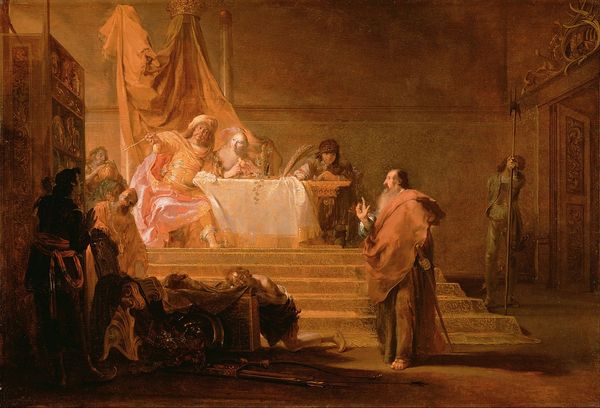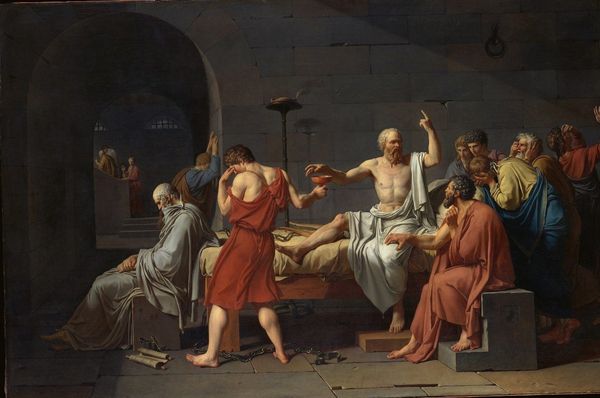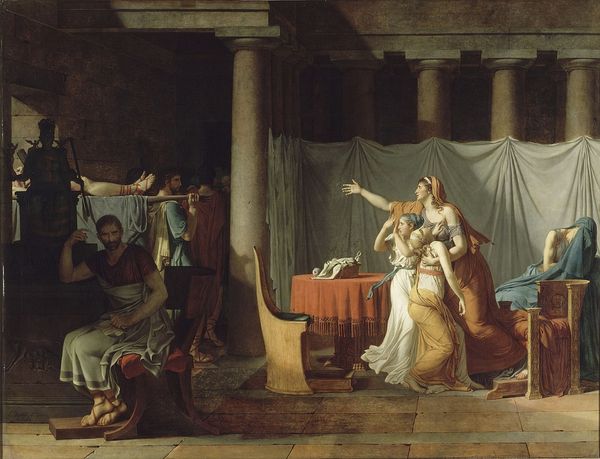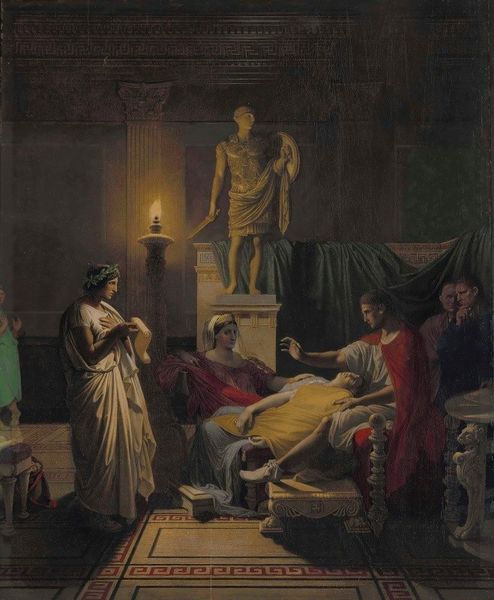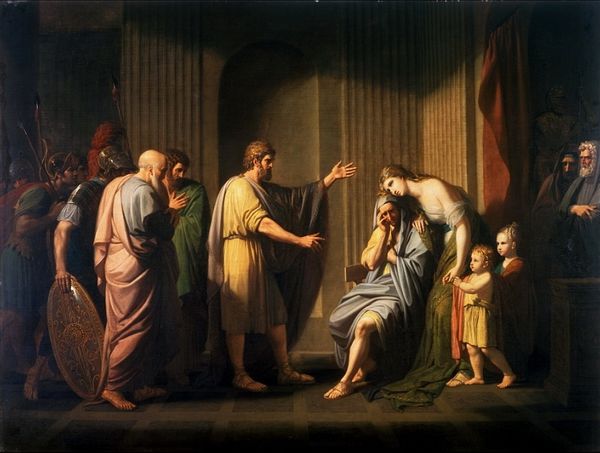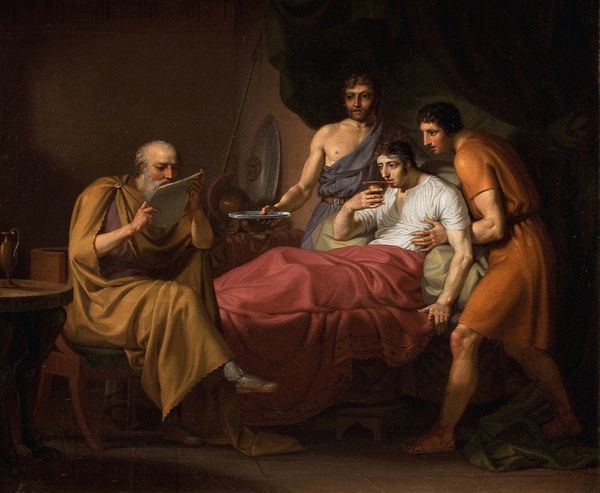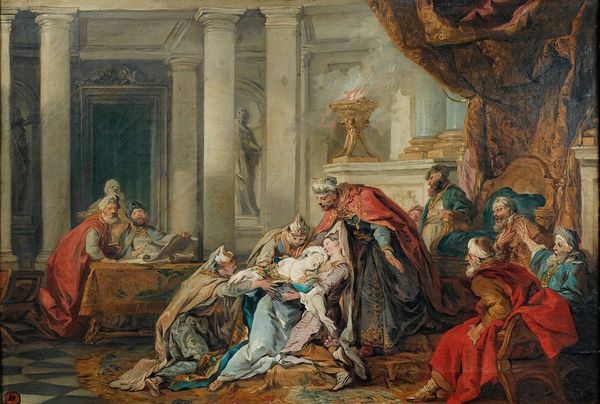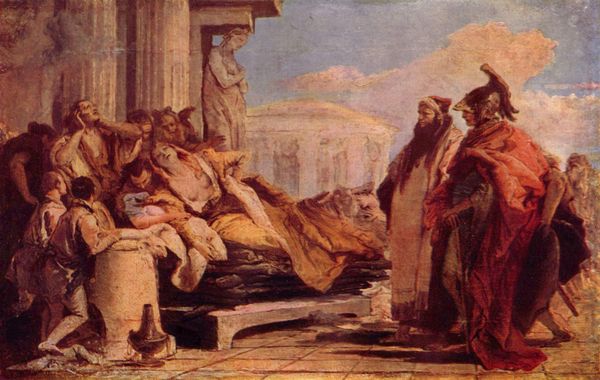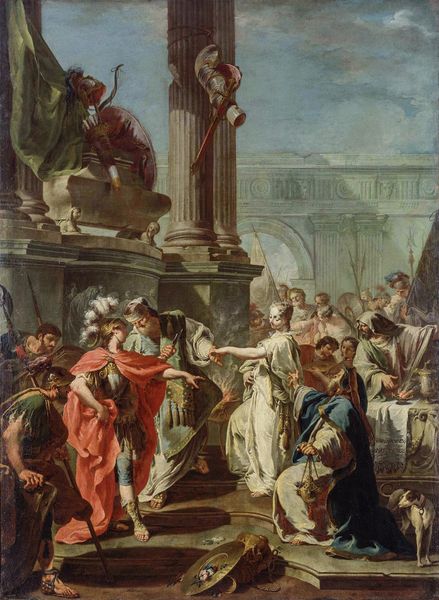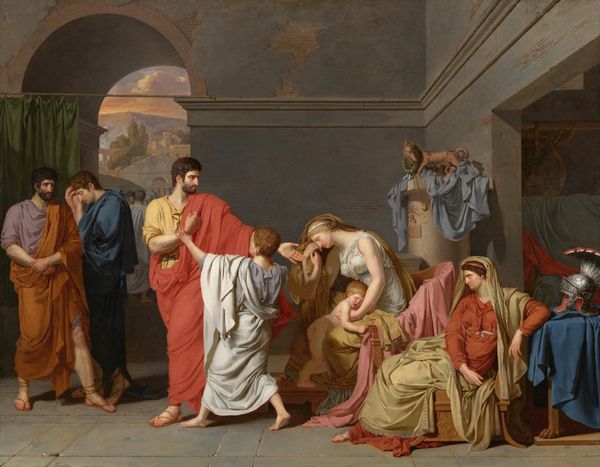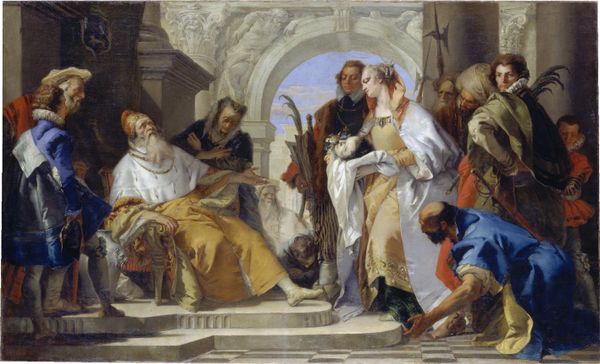
Antiochus and Stratonice 1774
0:00
0:00
jacqueslouisdavid
École nationale supérieure des Beaux-Arts (ENSBA), Paris, France
painting, oil-paint
#
neoclacissism
#
allegory
#
narrative-art
#
painting
#
oil-paint
#
painted
#
figuration
#
oil painting
#
roman-mythology
#
mythology
#
history-painting
#
academic-art
Dimensions: 120 x 155 cm
Copyright: Public domain
Editor: This is Jacques-Louis David’s "Antiochus and Stratonice," painted in 1774 using oil on canvas. It's got a very theatrical feel, almost like a stage production with its clear, bright lighting. The figures are arranged in a distinct foreground, middle ground, and background. What are your thoughts about the visual elements and their construction? Curator: Indeed, it strikes me immediately how David organizes the narrative space. The composition, particularly the way the figures are posed and grouped, closely aligns with Neoclassical ideals. Observe how each figure has an independent story through posture, contributing to a frieze-like construction within a constructed setting. Editor: So, is the key to appreciating this work found more in its arrangement and poses? Curator: Not merely. While the composition and the deliberate poses that create this striking visual tableau are integral, observe how light delineates figures and underscores emotional hierarchy, and notice the stark contrast with shadowed sections in the piece. Consider the stark contrast between Stratonice’s luminescent gown versus Antiochus and physician Hierophilus. How does it shift the piece? Editor: That’s fascinating! It's less about the story itself, more about the precise ways David constructed it visually using color and light? I focused primarily on the scene portrayed within this artwork. Curator: Precisely. One should not look to the narrative represented by the figures but rather on the arrangement of line, color, and composition. Did you notice, for instance, the almost geometric way the characters form different compositional triangles within the artwork's field? Editor: That is incredibly insightful! I can see how understanding the principles underpinning the surface representation unveils additional depth. It emphasizes how form drives meaning. Curator: It is indeed where a richer experience lies. Viewing the composition as the primary storyteller enables one to explore far beyond a historical subject.
Comments
No comments
Be the first to comment and join the conversation on the ultimate creative platform.
